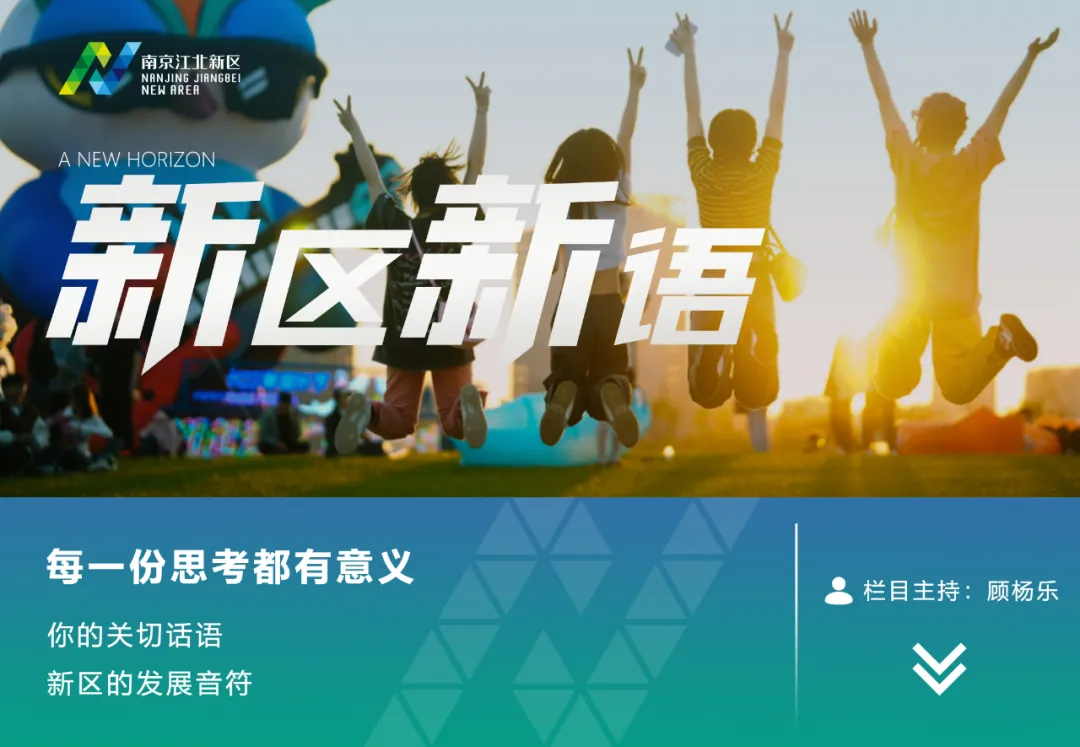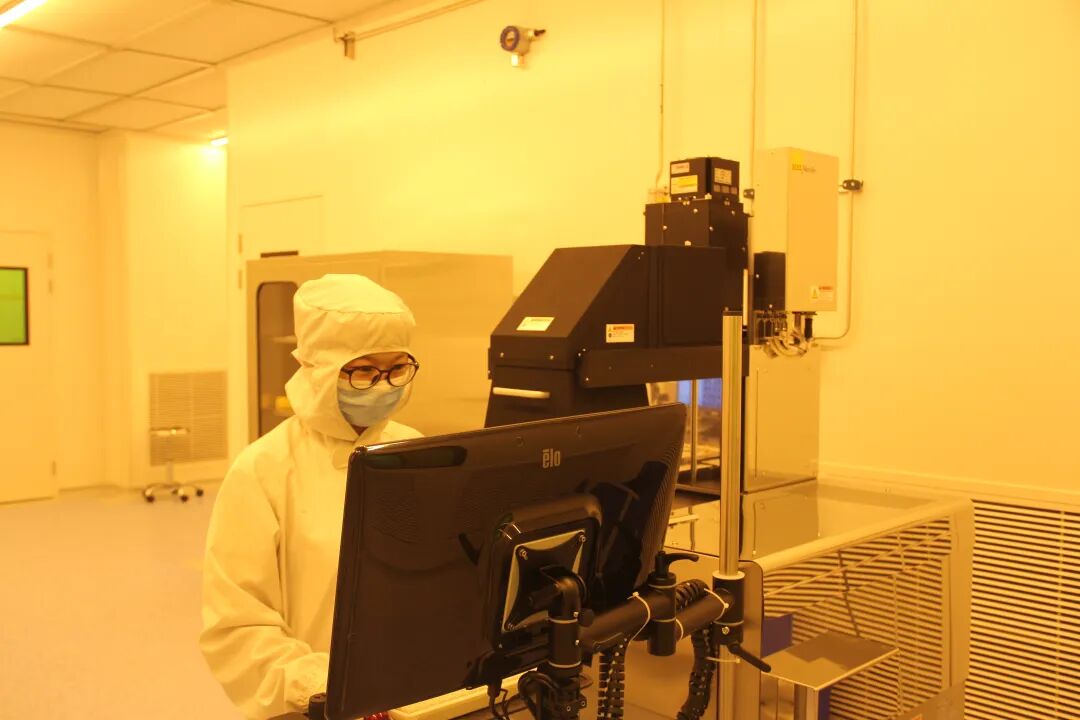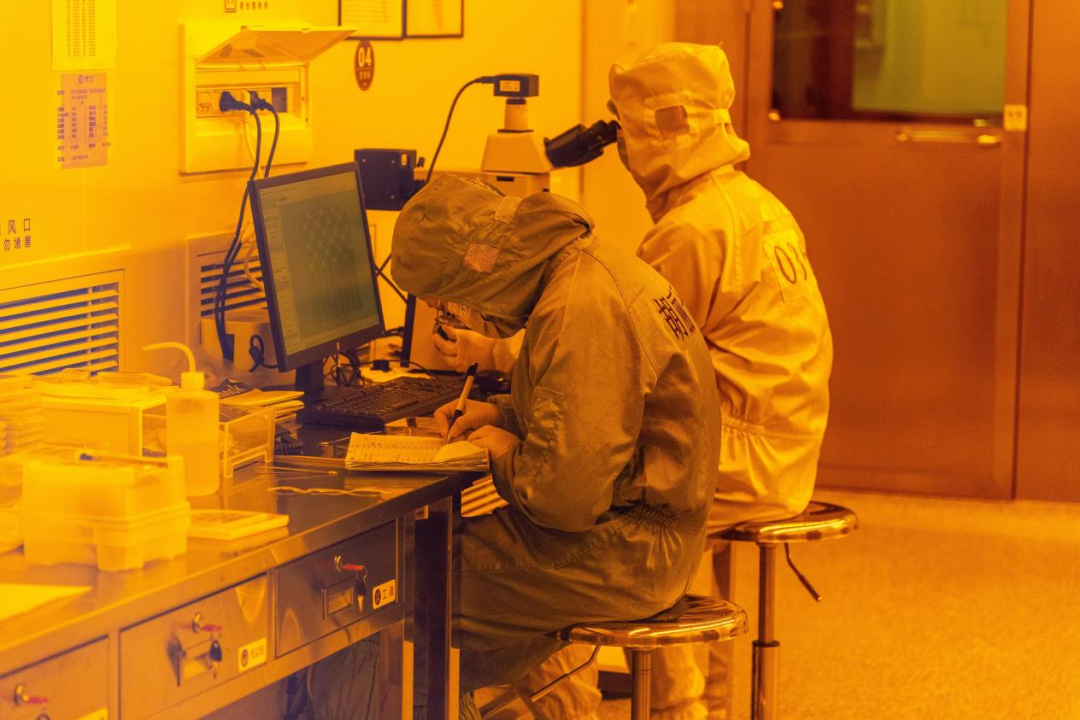
 Author | Jin TingStaff at Nanjing Zhi OptoelectronicsAfter just finishing the release of five PDK toolkits, we are now preparing for the launch of the large model OptoChat AI. Over the past month, our team has been in “high-speed operation” mode, focusing on innovations and industrial applications of photonic chip technology, rolling out one new development after another. Although busy, we are particularly motivated.You may not know that behind such a “hardcore” platform are many youthful faces—At Nanjing Zhi Optoelectronics, the proportion of young employees born in the 90s and 00s has reached 82%, and even,recent graduates from the 00s have become our product managers. Usually, they either carve chip processes at the nanoscale or explore the boundaries of knowledge with large models, shining in their respective positions. As someone who traverses between the laboratory, production line, and conference room with documents every day, I have naturally witnessed many vivid scenes.On the eve of the May Fourth Youth Day, I would like to share a few small stories I have recorded.
Author | Jin TingStaff at Nanjing Zhi OptoelectronicsAfter just finishing the release of five PDK toolkits, we are now preparing for the launch of the large model OptoChat AI. Over the past month, our team has been in “high-speed operation” mode, focusing on innovations and industrial applications of photonic chip technology, rolling out one new development after another. Although busy, we are particularly motivated.You may not know that behind such a “hardcore” platform are many youthful faces—At Nanjing Zhi Optoelectronics, the proportion of young employees born in the 90s and 00s has reached 82%, and even,recent graduates from the 00s have become our product managers. Usually, they either carve chip processes at the nanoscale or explore the boundaries of knowledge with large models, shining in their respective positions. As someone who traverses between the laboratory, production line, and conference room with documents every day, I have naturally witnessed many vivid scenes.On the eve of the May Fourth Youth Day, I would like to share a few small stories I have recorded. 01Rooted Deep in the “Optical Core”Repeatedly refining process parameters and observing cross-section changes… In the lithium niobate process laboratory of Nanjing Zhi Optoelectronics, several PhD students, including Tang Ji and Ye Zhilin, are repeatedly conducting a set of waveguide etching experiments. Such scenes have become the norm in their work.This young research team, with an average age in their thirties, consists of members who graduated from Nanjing University, the Chinese Academy of Sciences, and prestigious overseas universities. They do not limit themselves to papers; they choose to push their research results from the laboratory to the production line, turning theory into verifiable and replicable processes step by step.
01Rooted Deep in the “Optical Core”Repeatedly refining process parameters and observing cross-section changes… In the lithium niobate process laboratory of Nanjing Zhi Optoelectronics, several PhD students, including Tang Ji and Ye Zhilin, are repeatedly conducting a set of waveguide etching experiments. Such scenes have become the norm in their work.This young research team, with an average age in their thirties, consists of members who graduated from Nanjing University, the Chinese Academy of Sciences, and prestigious overseas universities. They do not limit themselves to papers; they choose to push their research results from the laboratory to the production line, turning theory into verifiable and replicable processes step by step. They remember when they first started working on the lithium niobate process, there were almost no reference flowcharts available, and every step had to rely on data accumulation and parameter iteration. It is this group of people who, centered around the “thin film lithium niobate + X” optoelectronic common technology platform, completed the core process construction from “0 to 1” in just two years and successfully released the first batch of wafer-level PDK design tools in China.“We believe that Chinese people can also achieve the best in the most challenging optical chip processes.” This is a phrase they wrote on the front page of their notebooks. Today, this phrase has become a slogan on the wall of their laboratory.02The “00s” Team that is “Secretly Making Moves”Have you ever thought about a group of “00s” using their spare time to “secretly” build a “running” local large model prototype?At Nanjing Zhi Optoelectronics, there is such a group of young creators. The first domestic photonic AI intelligent engine “OptoChat AI” that we are about to release originates from them.“Initially, this project was not officially launched within the company due to concerns about high investment and uncertainty,” said team leader Wang Hairuo, “but we didn’t want to wait.”
They remember when they first started working on the lithium niobate process, there were almost no reference flowcharts available, and every step had to rely on data accumulation and parameter iteration. It is this group of people who, centered around the “thin film lithium niobate + X” optoelectronic common technology platform, completed the core process construction from “0 to 1” in just two years and successfully released the first batch of wafer-level PDK design tools in China.“We believe that Chinese people can also achieve the best in the most challenging optical chip processes.” This is a phrase they wrote on the front page of their notebooks. Today, this phrase has become a slogan on the wall of their laboratory.02The “00s” Team that is “Secretly Making Moves”Have you ever thought about a group of “00s” using their spare time to “secretly” build a “running” local large model prototype?At Nanjing Zhi Optoelectronics, there is such a group of young creators. The first domestic photonic AI intelligent engine “OptoChat AI” that we are about to release originates from them.“Initially, this project was not officially launched within the company due to concerns about high investment and uncertainty,” said team leader Wang Hairuo, “but we didn’t want to wait.”

So, the “not wanting to wait” Wang Hairuo gathered a group of “00s” friends, self-studied deployment, and repeatedly experimented in their spare time, quietly completing the prototype construction. Until an internal presentation, their demonstration report left the company management “dumbfounded”.“Are you sure you did this yourselves?” Faced with the leaders’ surprise, they just smiled and nodded. Ultimately, the company decided to support the project and invested resources to form a research and development team. Thus, OptoChat AI was born.People often say that opportunities are hard to come by, but this group of “00s” has proven through their actions that opportunities can perhaps be created by oneself.03The “Three Musketeers” from Different DepartmentsNot only the R&D personnel are at the forefront; at Nanjing Zhi Optoelectronics, young talents safeguard every step from project signing to construction and operation.For example, we have a formidable “Three Musketeers”: Ye Ping leads the operations team, responsible for the implementation of platform projects; Fu Yu leads the marketing team, responsible for client engagement and order fulfillment; Wang Minglu leads the facilities team, providing full-process support for client onboarding and project implementation.

They remember that Ye Ping once engaged with a company that had very high venue requirements, changing plans four times.Without any impatience, Ye Ping accompanied themto visit each site, modifying the drawings time and again. It was this sincerity that led the company to decisively sign the contract.Fu Yu is even better at communicating with clients; in his view, clients value not only technology but also the trust they can place in us. The projects they connect will ultimately be handed over to Wang Minglu for equipment onboarding, facility operation, and other services.Although the “Three Musketeers” belong to different departments, they cooperate extremely well, and it is because of them that each project can be quickly implemented. As I wrote down these three small stories, familiar faces floated before my eyes. I suddenly remembered that during the most challenging times of project breakthroughs, the large model development team creatively used AI to compose the song “Towards the Light” to encourage everyone. On countless late nights, while the outside world was silent, the laboratory was brightly lit, and my colleagues and I were all “light chasers”.Of course, the youthful power I have witnessed is not limited to Nanjing Zhi Optoelectronics.This year marks my seventh year in the new district.Every day, walking between the buildings of the research and innovation park, I always pass by young faces.Although they walk quickly, the light of dreams sparkles in everyone’s eyes.Those lights may hide the nanoscopic star rivers under the microscope or reflect the deep blue characters of code in motion.When countless lights converge on the north bank of the Yangtze River, the future’s canvas will be illuminated.
As I wrote down these three small stories, familiar faces floated before my eyes. I suddenly remembered that during the most challenging times of project breakthroughs, the large model development team creatively used AI to compose the song “Towards the Light” to encourage everyone. On countless late nights, while the outside world was silent, the laboratory was brightly lit, and my colleagues and I were all “light chasers”.Of course, the youthful power I have witnessed is not limited to Nanjing Zhi Optoelectronics.This year marks my seventh year in the new district.Every day, walking between the buildings of the research and innovation park, I always pass by young faces.Although they walk quickly, the light of dreams sparkles in everyone’s eyes.Those lights may hide the nanoscopic star rivers under the microscope or reflect the deep blue characters of code in motion.When countless lights converge on the north bank of the Yangtze River, the future’s canvas will be illuminated.
“New District New Language” welcomes submissions
Please send submissions to the email
For paper submissions, please send to: Nanjing Jiangbei New District, Yanjing Road 10, Nanjing Jiangbei New District Media Center, Editorial Department
 Editor | Gao YuanPublished | Xu Yaying Wu XiaorongReviewed | Wang Xin
Editor | Gao YuanPublished | Xu Yaying Wu XiaorongReviewed | Wang Xin